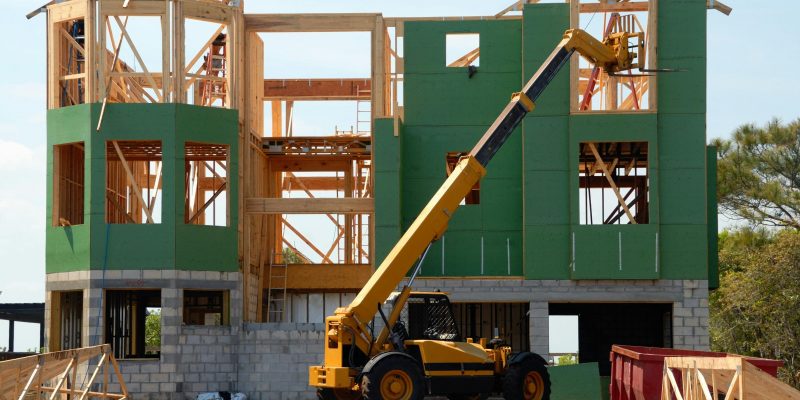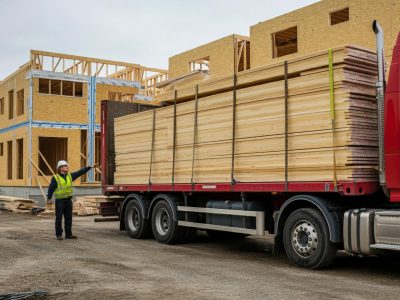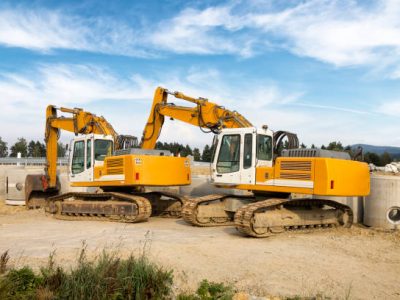In the dynamic construction world, the skyline is ever-changing, with new structures rising from the ground every day. At the heart of these transformations are not just the skilled workers and visionary architects but also the arsenal of equipment that makes all construction projects possible. This article delves deep into the essential machinery and tools that form the backbone of every construction project, highlighting the importance of each and the continuous innovation that propels the industry forward. Read on to identify the equipment you need:
The Vital Role of Heavy Machinery
Before a building shapes the skyline, heavy machinery lays the groundwork. These are the tools and the lifeblood of any construction site, setting the pace and scale of all operations. The roar of engines and the metal symphony of moving parts signify the beginning of creation. Heavy machinery is the starting point of all construction, from leveling ground to laying foundations. As technology advances, these machines become more efficient, precise, and environmentally friendly, reflecting the industry’s growth and adaptation to modern demands.
Cranes, Bulldozers, and Excavators
Imagine a world where these mechanical behemoths didn’t exist. Buildings would rise slowly, and infrastructure would be less ambitious. Cranes, bulldozers, and excavators are not just tools but symbols of human ingenuity and determination. They work in harmony to execute tasks too great for manual labor, driven by the skilled hands of operators who guide them with precision and care. Their presence on a construction site is a testament to the scope and ambition of modern construction projects.
Skid Steers and Forklifts
Skid steers and forklifts might not be the most glamorous in the orchestra of construction equipment, but they are certainly some of the most versatile. These machines adapt to various tasks, proving that size is only part of construction. They can navigate tight spaces, lift heavy loads, and change attachments quickly, making them invaluable assets. Adding accessories like pallet fork extensions further enhances their utility, showcasing the industry’s ingenuity in maximizing resources.
Safety Equipment
A steadfast commitment to safety underpins the clank and whirl of machinery. Modern machines are fortresses of safety features designed to protect those who operate them and those who work alongside them. For example, consider using harnesses and auto-braking systems in cranes, which have drastically reduced fall and collision incidents on sites. Training programs have evolved, using technology to simulate real-world scenarios, preparing operators for many situations they might face. Virtual reality simulations are now commonplace, allowing operators to experience and navigate potential hazards in a controlled environment. The industry understands that a safe site is productive, and safety and training are at the forefront of every project.
“Green” Equipment
The construction industry is still catching up as the world awakens to the need for sustainable practices. Innovations in equipment are leading to reduced emissions, quieter operation, and less invasive construction methods. For instance, electric excavators and hybrid bulldozers are now emerging, significantly reducing the carbon footprint of construction sites. The evolution towards electric and hybrid machinery is not just a trend but a commitment to a healthier planet. These advancements signify a future where construction and environmental stewardship go hand in hand.
Tech Equipment
As the industry evolves, integrating technology in construction equipment is becoming increasingly prevalent. GPS systems, automation, and even drones are becoming standard site tools. An example of this integration is using drones for site surveying and monitoring, which offers a bird’s-eye view of the project and provides real-time data for better decision-making. These technologies enhance precision, improve safety, and streamline processes, representing a new era where construction meets technological innovation. As we look towards the future, the melding of tech and construction promises even more efficiency and possibilities.
Specialized Equipment
While the generalists of construction equipment get much of the attention, specialized machinery is equally essential. Tunnels, bridges, and high-rise buildings often require unique tools for specific tasks. Consider the tunnel boring machines, which have revolutionized underground construction, allowing for the efficient and safer creation of tunnels for transport and utilities. These pieces of equipment may not be as widely recognized, but their contribution is essential, enabling the construction of complex and specialized structures that define modern infrastructure.
Maintenance and The Human Element
Behind every smoothly running machine is a regimen of rigorous maintenance. The unsung heroes are the technicians and mechanics who ensure that each bolt is tight and every engine runs smoothly. A key example is the regular servicing of engines and hydraulic systems, which not only prolong the life of the machinery but also ensure operational safety and efficiency. A well-maintained machine is reliable, and in the fast-paced world of construction, reliability is paramount. The industry’s dedication to maintenance reflects its commitment to excellence and efficiency.
While the machines are impressive, the people make the real magic happen. Operators, engineers, and laborers bring their skills, dedication, and spirit to every project. They work in unison with the machines, guiding them with precision and care. For example, a skilled crane operator can maneuver heavy loads through tight spaces with agility and accuracy, a testament to the human expertise that directs these powerful machines. Their expertise and commitment are the backbone of every construction project, turning plans and materials into architecture and engineering marvels.
The Economic Impact and Future Trends
Construction equipment does more than build; it drives economies. This machinery’s manufacturing, selling, leasing, and servicing create jobs and fuel industries worldwide. For instance, the export of heavy machinery contributes significantly to national economies, reflecting its role in global trade. It’s a barometer for economic health, with demand often reflecting broader economic trends. The industry’s global reach underscores the universal nature of building and development, connecting markets and people across continents.
The future of construction equipment is as dynamic as the industry itself. Anticipating the next wave involves looking at current trends and innovations. From autonomous machines to 3D printing and beyond, the possibilities are as vast as the structures they will help create. As we look forward, the industry continues to embrace change, ensuring that the future of construction is as robust and innovative as the equipment that drives it.
Conclusion
In weaving together the stories of machines and the people behind them, this exploration into the backbone of every construction project reveals a world of innovation, dedication, and continuous evolution. Understanding the equipment is just the beginning of appreciating the vast network of skills, technology, and commitment that creates the built environment surrounding us. As the industry moves forward, it continues to build structures and a legacy of human achievement and ingenuity.




















